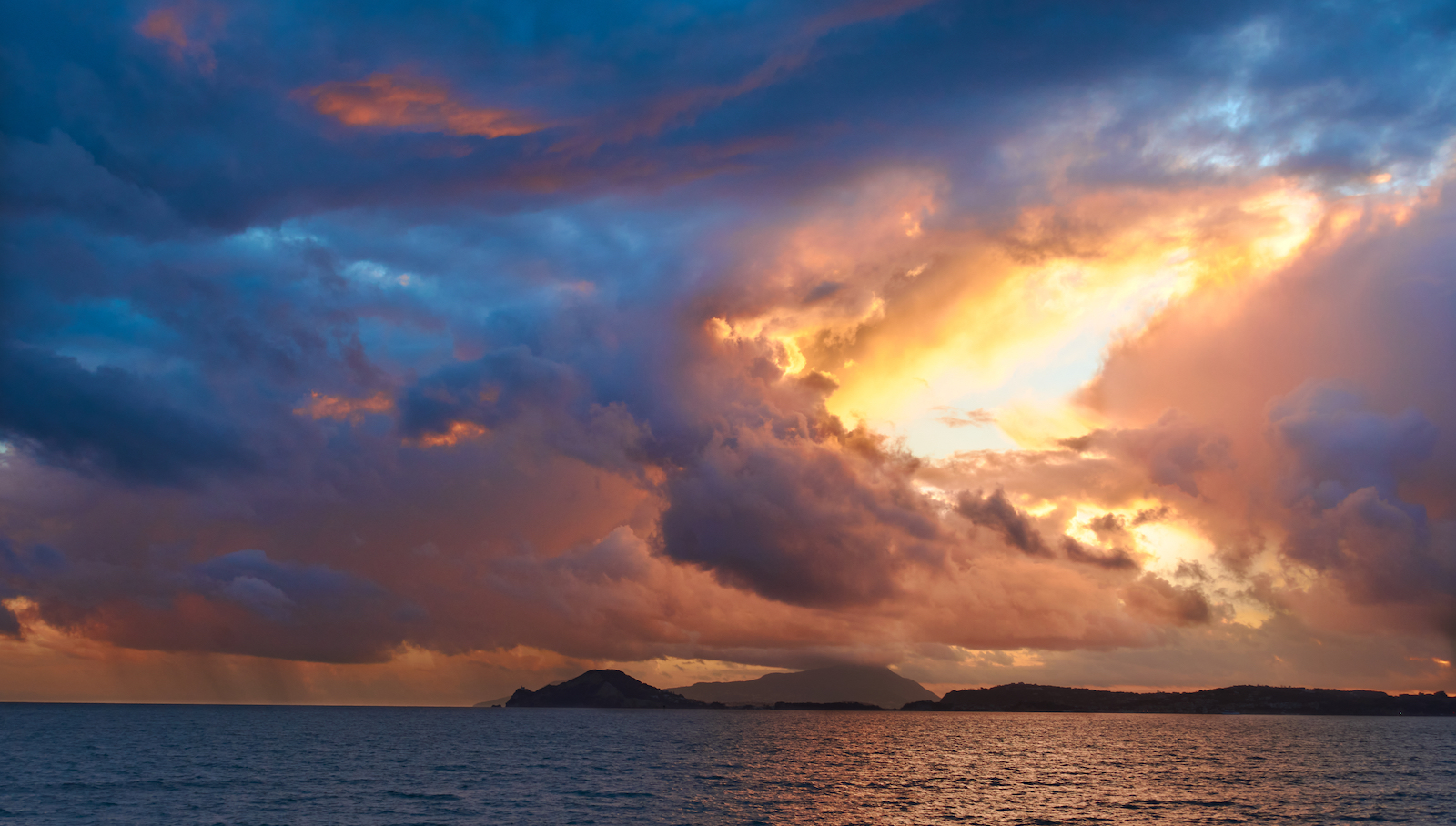Ground beneath Italy’s awakening 'supervolcano' rose 66 feet before its last eruption
In 1538, the ground beneath the Campi Flegrei supervolcano rose by six stories. Then, it burst.

The ground around Italy’s awakening supervolcano rose by up to 66 feet (20 meters) before its previous eruption, a new study has revealed.
In 1538, the ground below Campi Flegrei, near Naples, swelled to a breaking point then burst, burying the Roman-era village of Tripergole beneath a torrent of muddy ash and lava that became a new mountain — Monte Nuovo.
With the volcano showing renewed signs of restlessness, scientists behind a new study sought to better understand what happened during the volcano’s most recent historical eruption. They published their findings June 16 in the journal Geophysical Research Letters.
Related: Europe's most dangerous 'supervolcano' could be creeping toward eruption, scientists warn
"Today the ground deformations associated with volcanic activity are monitored both with satellites and with detection networks installed on the ground," lead-author Elisa Trasatti, a researcher at the National Institute of Geophysics and Volcanology in Italy, said in a statement translated from Italian. "However, we still know very little about the behavior of volcanoes and their eruptions that took place in the past, before the advent of the instrumental age."
Campi Flegrei — which means "burning fields" or "fiery fields" — is a sprawling, mostly-hidden network of 24 craters and edifices that stretch from its vast caldera opposite Mount Vesuvius at the western edge of Naples, into the nearby Gulf of Pozzuoli.

More than 1.5 million people live above the vast underground volcano complex, and half a million people have their homes inside its 7 mile (11 kilometer) long caldera, which was formed after an enormous eruption 39,000 years ago.
Get the world’s most fascinating discoveries delivered straight to your inbox.
The volcano has been stirring since the mid-20th century, with bursts of heightened activity in the 1950s, 1970s and 1980s. Another period of unrest began in 2005 that is still ongoing. Since then, the ground below Pozzuoli, a town located on the volcano's roof, has risen by 4 inches (10 centimeters) each year, adding up to a 13 foot (4 m) change in elevation since the 1950s. Campi Flegrei is also experiencing persistent small earthquakes, with more than 600 detected in April — breaking its largest monthly total ever recorded in the region.
To better understand the volcano’s present rumblings, scientists turned to its past; feeding data from geological, archaeological and historical sources into a mathematical model that estimated the flows of magma below Campi Flegrei’s surface.
"It emerged that the eruption was preceded by an intense deformation of the ground which first concerned the area of Pozzuoli, then localized in the area of the future eruptive vent, reaching an elevation of 20 meters," Trasatti said.
Volcanic gas had seeped into the crust deep beneath Campi Flegrei's surface, causing it to stretch, warp and slip, unleashing earthquakes. Once enough gas had accumulated, the crust ruptured, sending a column of magma from 4 miles (6.4 km) deep bursting to the surface, the researchers said.
The eruption was then followed by a period of ground subsidence and another of renewed uplift, before the volcano finally grew dormant until the 20th Century.
If Campi Flegrei were to reenact its largest known eruption 39,000 years ago, it could send molten rock and volcanic gases high into the stratosphere, unleash tsunamis 100 feet (33.5 m) high and spread a plume of sulfur and toxic ash that could plunge Earth into global winter for years — killing crops and causing mass extinctions.
Yet the researchers found that blasts from Campi Flegrei needn’t always be quite so cataclysmic. Just one hundredth of the magma that had accumulated inside the volcano prior to the 1538 eruption burst to the surface; meaning that eruptions can easily peter out without the volcano tapping into its full destructive power.

Ben Turner is a U.K. based writer and editor at Live Science. He covers physics and astronomy, tech and climate change. He graduated from University College London with a degree in particle physics before training as a journalist. When he's not writing, Ben enjoys reading literature, playing the guitar and embarrassing himself with chess.


